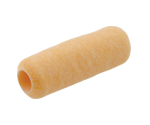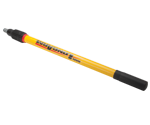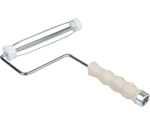Paint Applicators Buying Guide
Having the right paint brushes and paint rollers in your painter's tool kit saves time, makes the most of your paint, and improves results. Having the right size, shape, and type of tools for your project makes a big difference.
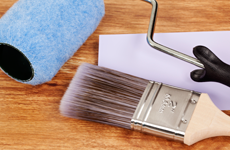
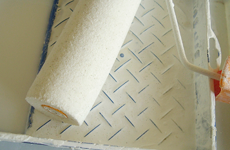
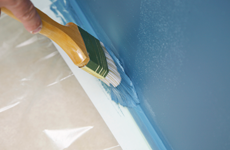
The Difference Between Paint Brushes and Paint Rollers
In any big painting job, you will likely need both paint rollers and paint brushes. Paint rollers are designed to cover large flat areas like walls, ceilings, or outdoor decks. They can quickly cover a big surface with fresh paint or primer. Paint brushes are used to cut into corners and neatly cover edges and trim. Paint brushes are also the tool you need if your space is narrow, small, or too tight for a roller.
Types of Paint Brushes
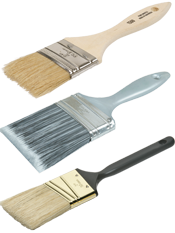
Paint brushes are available in a variety of sizes, with bristles made of either natural hair or synthetic fiber like nylon or polyester. It's best to choose your brush type based of the type of paint you are using.
- Synthetic paint brushes hold their shape and can be reused for a few years. Choose nylon or polyester fiber paint brushes when applying latex paint and water based paints.
- Natural hair paint brushes create a smooth finish and are recommended when using oil based paints, applying topcoat or varnish. Natural hair paint brushes are absorbent, and not a good choice for water-based paint; the natural hair will soak up the paint which can make it hard to work with and ruin the shape of the brush.
Choosing Straight or Angled Paint Brushes
Paint brushes with straight edges are designed to cover a large flat surface. Angled brushes are for cutting into corners and edges, around window sills, molding, cabinets, etc.
Understanding Paint Brush Stiffness
Paint brush bristles are available in a variety of materials and the different bristle types vary in feel, stiffness, and flexibility. You want to choose the right firmness and flexibility for your project:
- Soft: Extra flexibility offers better control, perfect for fine-finish painting and interiors for smoother application. Works best with fast-drying paints, clear coats, stains, and lightweight paints or primers.
- Firm: Bristles are somewhat stiff with good flexibility, designed for all-purpose painting projects, offering even coverage. Works best with medium-weight paints such as acrylics and enamels.
- Extra-Firm: Extra stiffness works well in heat and humidity and is perfect for rough, outdoor surfaces like brick or concrete. Choose extra-firm bristles when using thicker paints and primers, low VOCs, or other fast-drying coatings.
Using Paint Rollers
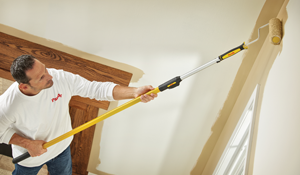
Having the right paint roller will make your job easier and faster. A good paint roller will leave a smooth, even finish and cleanup should be simple.
The paint roller generally has two parts - the frame or cage with a handle, and the roller cover which is used to apply paint. Rollers and the covers come in various sizes, nap lengths, and materials. You can also get extension poles.
Like brushes, paint roller covers can be made from natural or synthetic fibers.
- Synthetic covers can be made with a single type of fiber or a blend. They work best with most latex paints. The quality of synthetic roller covers varies from professional grade to economy, and are commonly made of polyester, microfiber, or foam.
- Natural fiber covers, such as lambskin wool, or mohair are more absorbent and work best with oil-based paints. They leave a smoother finish, which professionals appreciate; however they are typically more expensive than synthetic alternatives.
Understanding the Nap/Fiber Length for Paint Rollers
The thickness and length of the paint roller's fibers, or nap, affects the performance and final texture of your painted surface. Generally, you want to use a shorter nap for smooth surfaces and longer nap for rough ones. Paint roller naps are available in 1⁄4, 3⁄8,1⁄2, 3⁄4, and 1 inch lengths. For interior jobs like walls and ceilings, choose a medium length nap of 3⁄8 to 1⁄2 inch. These should leave smooth coat with minimal roller marks. A roller with longer fibers, such as 1 inch, will leave spatter marks as it rolls; this works best for surfaces that resist paint like concrete or brick.
Proper Care and Storage of Brushes & Rollers

It is important to clean paint brushes and rollers as soon as possible after use. Most professional painters work with fast-drying paints which can make cleanup challenging. The paint can quickly bind to bristles, making it difficult to remove. You may want to keep an extra set of paint brushes on hand to change out every few hours. Clean the used brushes immediately so paint does not harden, and switch to new ones to continue your painting.
With paint rollers, it can sometimes be easier and more cost-effective to simply throw them out after one use. If you want to reuse your rollers, clean them thoroughly; remove roller covers from the frame immediately, before paint has a chance to dry.
In general:
- Do not soak paint brushes and rollers in solvent or waterfor an extended period; this can damage the tools.
- Be sure to scrape all excess paint from your brushes and rollers before rinsing.
To clean oil-based paints, varnishes, lacquers, and shellac from your paint tools, follow the manufacturer's instructions and use the proper cleaning solvent—such as mineral spirits, paint thinner or other solvent. Pour solvent into a small container or pail, (not a sink) and dip your brushes repeatedly until clean. Properly dispose of solvents according to directions.
To clean up water-based or latex paints, use warm water and mild soap. Prepare soapy water in a clean container and dip the paint brushes or rollers, then rinse with clear water. Use a painter's comb to pull paint from the bristles while rinsing. Add a generous amount of scrubbing hand soap, like Gojo's Orange Hand Cleaner with pumice to completely clean the brush. Rinse until the water runs clear.
To dry, hang brushes with bristles pointing down so water drips away from the brush and ferrule. Once dry, store brushes so bristles stay in their correct shape. Flex the bristles to soften them, and keep them from curling. Proper cleaning and care will help your paint tools last through many paint jobs.


